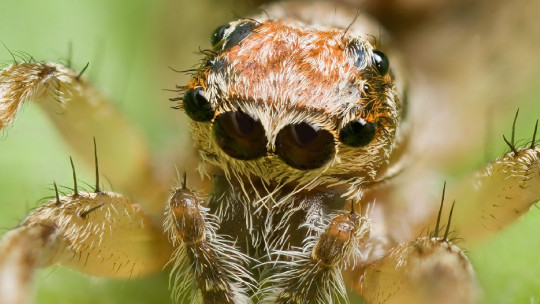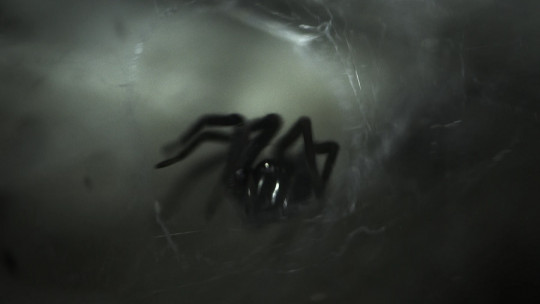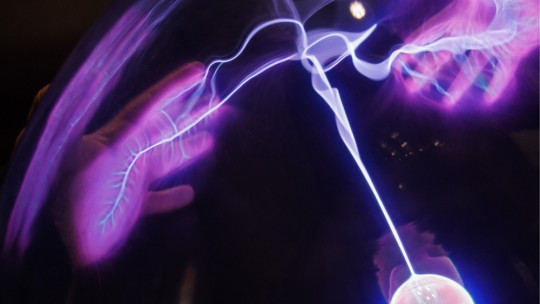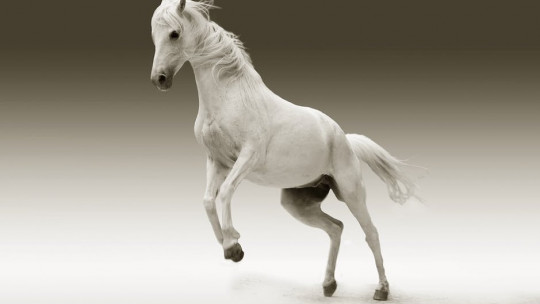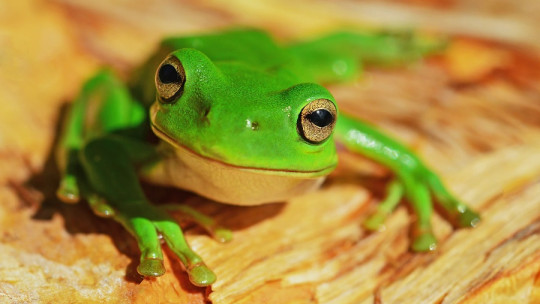
Fear is one of the basic emotions that most animals that inhabit the planet have, including human beings. Thanks to it, we warn that certain stimuli are potentially dangerous to life, and we prepare a response according to the threat.
Thus, it is not a dangerous affect, nor is it “negative” as it is traditionally thought. It is rather a useful and effective phenomenon to guarantee the survival of a species since it keeps us safe in a sometimes tremendously hostile world.
However, sometimes such emotion can extend where it should not be, or acquire an intensity disproportionate to the objective characteristics of the stimulus that is triggered. In this case we are referring to phobias, disorders that are included within the general category of anxiety.
In this article we will talk about a fear that is more common than people usually think and that can limit the quality of life of those who suffer from it. This is ranidaphobia Let’s see what it is, why it happens and how it is treated.
What is ranidaphobia?
Ranidaphobia is the particular label with which the atrocious and disabling fear of frogs is described The term comes from two classical languages, whose etymology is rooted in Latin (“ranae” or frog) and Greek (“phobia” or fear). It is a specific phobia of the animal subtype, a form of aversion much more common in childhood than in adulthood, although it can affect anyone throughout their life cycle (regardless of sex).
A whole series of qualities are attributed to the frog that many people find unpleasant. Among them, extremely mobile eyes stand out, which stand out as the most visible anatomical region when they are submerged under water, and which also have both eyelids and nictitating membranes that cover their eyeballs and give them a bright and shiny appearance. “attentive”. Its skin is slightly slimy, and its legs are tremendously strong considering its weight and size.
People who suffer from ranidaphobia judge these traits as extremely aversive and extend this assessment to the “non-physical” characteristics of the animal, such as its unmistakable way of croaking, which also requires the action of thin membranes located under the skin of its throat ( whose movement tends to be “horrifying” to those who fear them). As time goes by, if appropriate treatments are not applied, the fear worsens and expands even to the simple viewing of a frog on television or other media (the Internet, for example).
During exposure to a stimulus associated with a frog, the person suffering from ranidaphobia experiences body sensations similar to those of a panic attack: hyperventilation, accelerated heart rate, mydriasis of the pupil (which can reduce visual acuity and hinder vision in spaces that are too bright), sweating and the feeling that the body itself is about to collapse. In the most serious cases, symptoms of depersonalization and derealization may arise.
In addition to this, there are also cognitive symptoms that occur before exposure to the stimulus itself (anxious anticipation of the encounter with a frog due to being in a space where they are usually found) or during it (thoughts that they are not “can be endured”; or mental images in which this animal moves, stalks, jumps or comes into contact with the person). In addition to this, motor behaviors also occur that contribute to maintaining the problem over time (flight or escape).
This fear, which is valued as irresistible, usually also extends to those places where frogs populate, which are numerous and very varied (since they are widely distributed throughout the geography). For this reason, spaces with excess vegetation or humidity are usually avoided, as well as locations that are too close to rivers or swamps. Furthermore, the fear worsens at night or close to it, as these are periods of poor visibility and in which the sound of these batrachians is more evident.
What are the causes of this disorder?
The causes by which ranidaphobia can manifest are very diverse; and are related to psychological, social and biological variables. The last of them allude directly to genetics, since it has been shown that vulnerability to the development of anxiety problems is associated with family inheritance so that approximately 50% of this phenomenon is attributable to it (although it is not always easy to dissociate it from specific parenting patterns that stimulate the appearance of this disorder).
Personal experience of a real and adverse situation in which a frog was involved is also very common, as is having witnessed how a person reacted with atrocious fear when interacting with this animal. In the same way, the use of frogs or other animals as deterrent strategies to avoid undesirable behaviors of the infant (“a dog will come and eat you”, for example), are also very frequently referred to when reconstructing the story of how the problem was created.
The truth is that frogs have traditionally been considered unattractive beings, or even unpleasant and unworthy of being loved, which has been successfully translated into folk tales and stories that have been transmitted for generations to children almost all over the planet ( “kiss frogs until one of them becomes a prince”). In fact, there are areas in the world in which it is considered an animal that carries bad omens (when related to witchcraft), and there are even phrases in the proverb that refer to them in a derogatory way (“I got a frog” ).
Some children also learn to fear them when they learn that many frogs are poisonous, especially those that have colors that might a priori be striking. Besides, In many countries, frogs are used as a “medium” through which children acquire basic notions of anatomy ; which for many means a traumatic, disgusting or cruel experience (evisceration, dismemberment, dissection, etc.) from which the subsequent irresistible fear arises.
Finally, it is also possible that the fear of frogs arises in a secondary way, that is, as part of a “broader” stimulus that the child fears Thus, for example, the croaking of frogs in the middle of a dark and/or cold place (in which fear arises naturally and adaptively) can make this sound go from being a neutral stimulus to another conditioned one, and from There the emotion is generalized to the rest of what the frog is (including its physical presence in places very different from those where this association was originally acquired).
It must also be taken into account that sometimes frogs appear in an unexpected or sudden way, jumping from behind a bush or simply landing on a stone or a plant without anything being able to notice this fact. This way of acting can trigger the emotion of surprise in the child, an affect that is considered neutral (neither positive nor negative) for most people, but with adverse nuances for those who live with an anxiety disorder.
Treatment
Psychological treatment is a very effective tool for addressing phobias, and this particular one is no exception. The program incorporates a set of cognitive and behavioral strategies that have a high degree of evidence, and that are selected based on the particularities of the case and the history of the problem. The use of drugs for anxiety (such as benzodiazepines) is not considered a priority, and there are even studies that indicate that it could interfere with some of the psychotherapeutic procedures.
As noted above, avoiding the feared stimulus (the frog on this occasion) becomes counterproductive, as it exacerbates the problem through a negative reinforcement mechanism. It is important, for this reason, to schedule exposure sessions that allow the fear response to be attenuated by habituation to the stimulus. Furthermore, over time they will improve self-efficacy and modify negative expectations about what happens when interacting with the animal (which are usually very dark at first).
Since it is not always possible to develop a live presentation from the beginning of the therapy, it can be started only in imagination using a progressive format. This modality is a good prelude and allows the therapist and the patient to build a hierarchy of situations (according to the levels of anxiety they generate), which the latter must face through “induction” by the professional. The technique is combined with diaphragmatic breathing or other relaxation modalities, and increases confidence in the ability to deal with fear. In addition, it can be enriched with audiovisual details (audio tracks in which the croaking of a frog can be heard, for example).
Certain cognitive techniques have also proven effective in this problem, especially those aimed at reflecting on the way in which mental contents (thoughts) can condition our emotions, articulating a proactive debate through which we will explore whether or not the beliefs we have about frogs adapt to objective and rational parameters. . For this occasion, the therapist and the patient dialogue and/or explore together, through a diversity of logical resources based on collaborative empiricism.
Finally, psychoeducation is key throughout the process. This should focus both on what anxiety is and why it happens, and on the characteristics of the frogs. To do this, you can resort to reading books about them, including those that delve into their habits and anatomy. In this way, the aim is to better understand what the object of fear is, and to reduce the usual uncertainty that plagues phobic stimuli.

